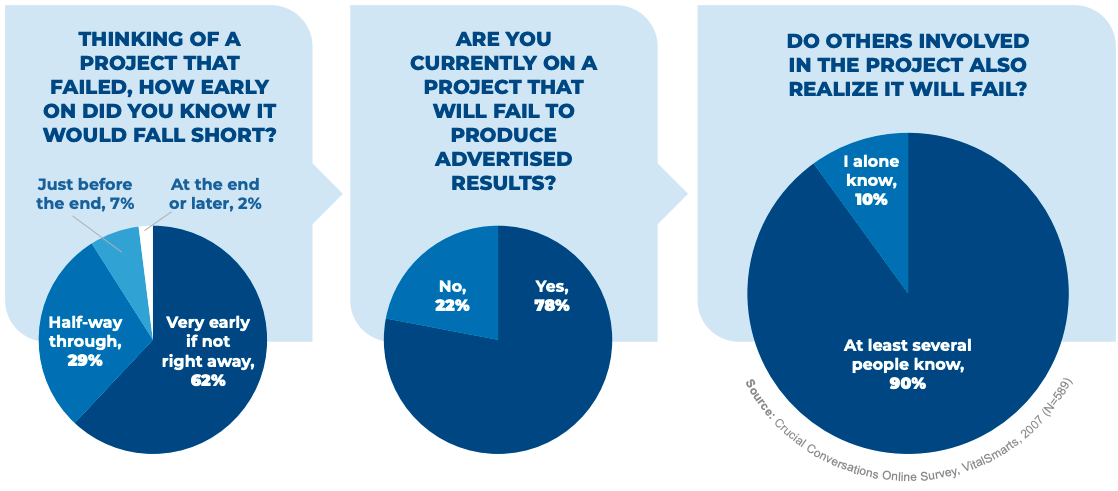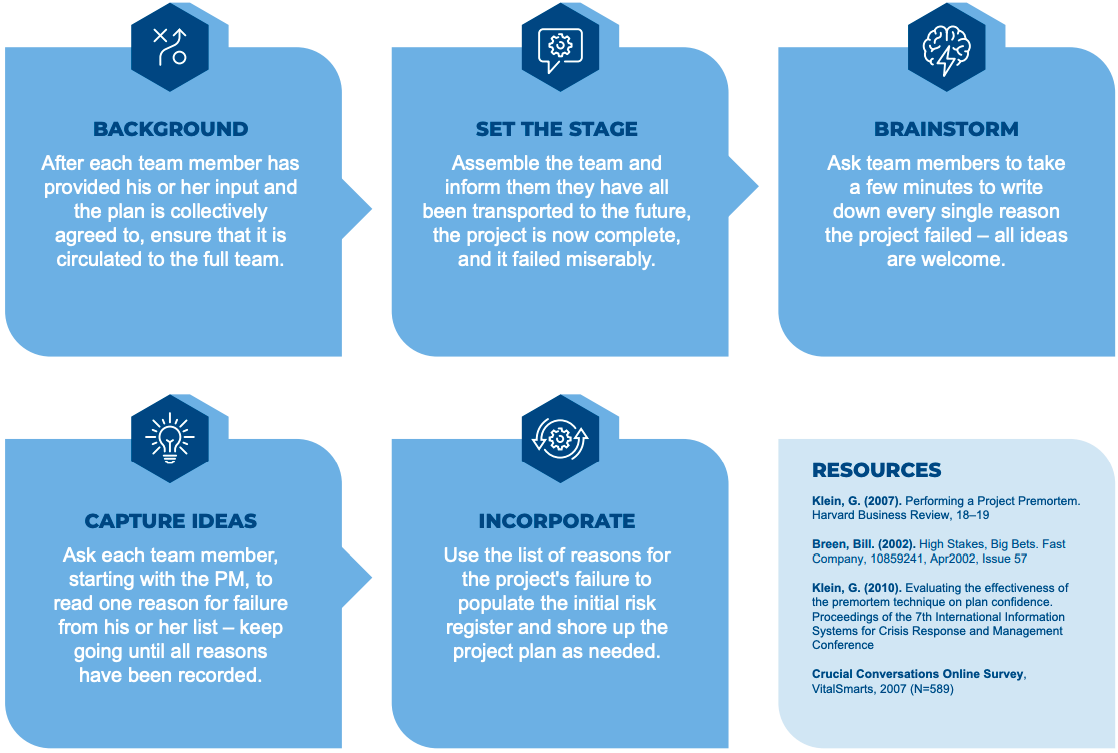
Project Pre-Mortems Looking Back at the Start
October 2020
Straight To The Point
The purpose of this document is to help project managers understand the value of pre-mortems over other common risk management practices and teach them how to facilitate project pre-mortem meetings.
Background
This document will describe:
- Tangible benefits of the pre-mortem process
- Why common risk management practices, including risk registers, often do not yield the intended results
- How to perform a pre-mortem to identify risks before a project fails
The team's best hope for staying on schedule is to anticipate problems and fix them before they occur.
— Bill Breen, 2002
Why Pre-Mortems Work

Deficiencies of Common Risk Management Practices
The Challenge with Risk Registers
After a project kicks off, team members are reluctant to raise risks due to:
- Fear of reprisal
- Fear of conflict
- Fear of being impolitic
- Fear of being ostracized
- Blind support of projects / leaders / other team members
And finally, overconfidence and confirmation bias. Some leaders/team members are so invested in a project that they dismiss serious risks.
We've all been there before - on a project we knew was doomed to fail from the start. We’re quick to think about all the upcoming waste, stress and frustration. What's most important though is what we do about it.
The Challenge with Retrospectives (Post-Mortems)
- People often hold negative views of retrospectives
- Retrospectives are deemed to be of little value
- Lessons learned from retrospectives are difficult to apply to new projects
- Maintenance of lessons learned
- More often than not, post-mortem outcomes are not rigorously applied to new projects
- Attrition leads to a loss of lessons learned
- Lessons learned databases are difficult to organize and maintain
- Doing too little, too late
- Lessons learned do not benefit a failed project
- Retrospectives are backward looking
- When the projects end, nobody can find time to perform a retrospective
- Impact of team bias
- Dominating personalities can control the meeting
- Teams blame external problems
How to Perform a Pre-Mortem
To kick things off, the meeting facilitator should set the scene by saying something like: “This project was an absolute and total failure and we’re all extremely lucky that we weren’t fired. That was just a total disaster. So let’s all take some time to write down everything that went wrong, and then we can reflect on it.”

About Reference Point
Reference Point is a strategy, management, and technology consulting firm focused on delivering impactful solutions for the financial services industry. We combine proven experience and practical experience in a unique consulting model to give clients superior quality and superior value. Our engagements are led by former industry executives, supported by top-tier consultants. We partner with our clients to assess challenges and opportunities, create practical strategies, and implement new solutions to drive measurable value for them and their organizations.
